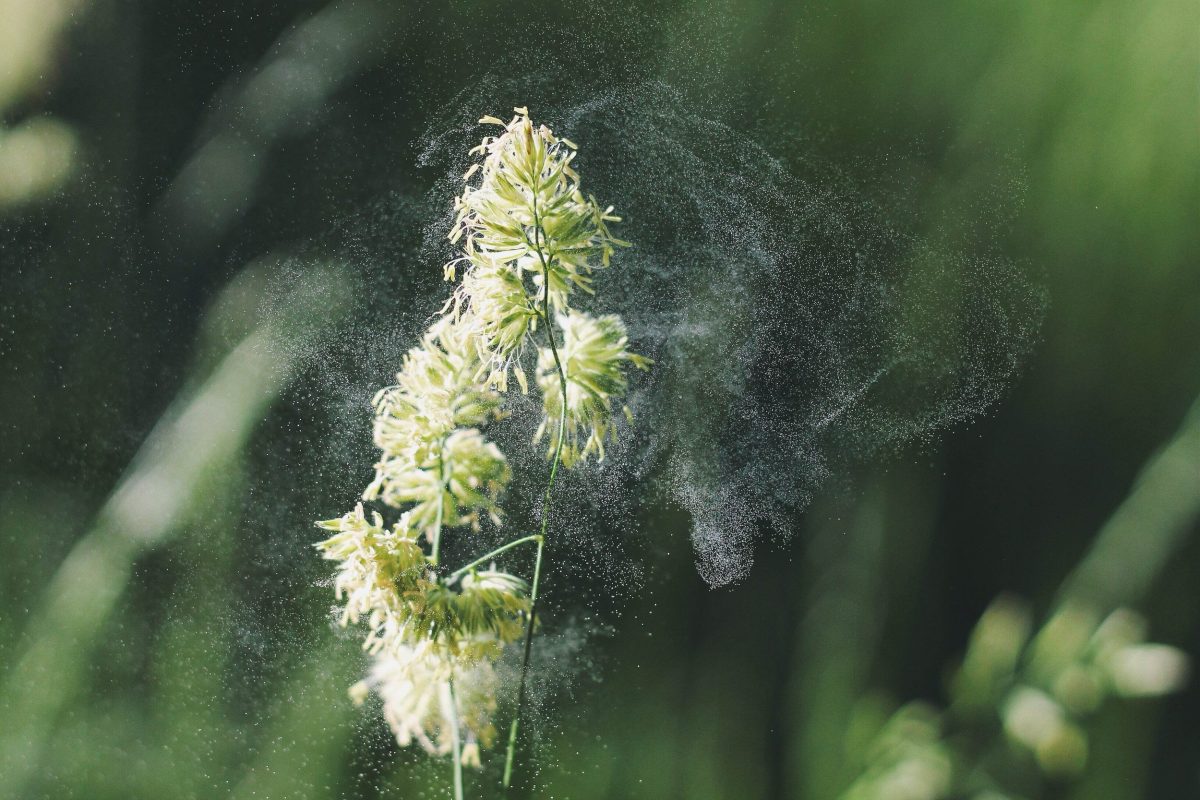Photo courtesy of Alex Jones/Unsplash
Itchy eyes, incessant sneezing and runny noses are just a few pesky signs that warmer weather is officially on the way (or that someone around has COVID-19, but that’s another story altogether). With plenty of flowers, trees and grasses in bloom, pollen has been unleashed on the general human populace and is now wreaking havoc on tissues and sleep schedules alike.
The result? Another trip to the grocery store for Kleenex and allergy medication. Some people have gotten used to the never-ending cycle of spring allergies, but for those whose frustrations with their symptoms continue, learning more about allergies is a path toward a sniffle-free time outside.
Allergies stem from the body’s attempt to defend itself from allergens, such as pollen, that make their way into the body from the nose, eyes and mouth. The immune system releases antibodies that attempt to attack the foreign particles, which release a chemical called histamine. Often, histamine then triggers the common symptoms people associate with seasonal allergies, according to Johnson & Johnson.
In the spring, the most common allergens often come from plants, including grass, trees, weeds and flowers, as they attempt to fertilize the surrounding plants, according to the Mayo Clinic. That’s why so many people suffer from increased allergies in the spring. Unfortunately for most people, as the body continues to develop antigens against a substance, allergic reactions can increase in severity the more the immune system starts to attack the allergens.
Seasonal allergy symptoms usually include itchy or red eyes, runny nose and nasal congestion, according to the Mayo Clinic. These symptoms can often be confused with a cold or, more recently, COVID-19; but according to the Mayo Clinic, allergies are rarely accompanied with a fever or muscle soreness.
For those curious about the allergy forecast, several websites also include information about what kind of allergens to expect. Accuweather displays a weekly graph showcasing expected pollination levels of trees, ragweed, grass pollen and mold; other factors, such as wind and temperature, are also available on the same page.
Similarly, Pollen.com provides a risk rating from low to high and a list of the top allergens of the day, in addition to a variety of resources about allergy testing.
Starting in March, tree pollen is a more prominent cause of spring allergies, according to Zyrtec. As the months progress, however, tree pollen peaks in April and grass pollen continues to rise until its similar peak in June. Unexpectedly, however, pollen from flowers does not usually contribute to allergy symptoms as much as the lighter, more mobile pollen from grasses and weeds like rye and oat plants.
Although dealing with allergies can be frustrating, there are a number of small ways to minimalize encounters with plant-related allergens, according to the Mayo Clinic. Hanging laundry inside instead of outside, for example, keeps pollen from building up on freshly washed clothing. Going outside after it’s rained is also an easy but oft-forgotten way to avoid pollen – the rain clears it from the air.
Of course, there are also allergy medications available, which usually come in the form of antihistamines that block the release of the chemicals that triggers the symptoms in the first place. Popular brands include Zyrtec and Claritin.
Regardless of how annoying allergies are, however, there is a plus: spring is in full swing, and finals are approaching fast. So stock up with Kleenex, keep taking allergy pills and know that it will all be over soon – at least until fall comes around and brings more allergies and more classes.







